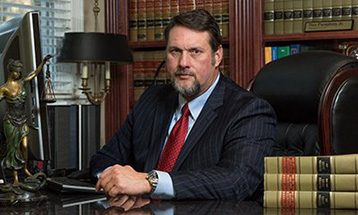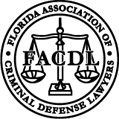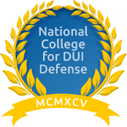- DUI
- Criminal Defense
- Florida DUI
- Traffic Offenses
- Drug Charges
- Marijuana Charges
- Violent Crimes
- Domestic Violence
- Temporary Injunctions
- Weapons Charges
- Theft Crimes
- White Collar Crime
- Juvenile Offenses
- Sex Crimes
- Violation of Probation
- Early Termination of Probation
- Seal or Expunge Criminal Record
- Criminal Appeals
- US Federal Offenses
- Misdemeanor Charges
- Felony Charges
- Co-Defendant Cases
- College Student Defense
- College Student Hearings
- FSU Students
- FAMU Students
- Florida Panhandle Arrests
- Extradition to Florida
- Bench Warrants / Warrants
- Emergency Bond Hearings
- Gambling Charges
- Drone Arrests
- Marsy’s Law
- UAS Infractions
- Introduction of Contraband
- Lying to Police
- Locations
- Case Results
- Our Firm
- Media
- Resources
- Blog
- Contact Us
A Recently Released Defendant Could Be Facing Jail Time Yet Again
March 22, 2022 Don Pumphrey, Jr. Criminal Defense Social Share
Crosley green was released in 2021, following a motion granted by Federal Judge Roy B. Dalton of the Middle District Court of Florida to immediately release Green due to health concerns, the pandemic, and the fact that Green’s conviction for first-degree murder was overturned by the very same judge in 2018. His freedom came after 31 years and 10 months in prison. Crosley, now 63, has spent the last year released and enjoying freedom after exoneration from a sentence stemming from a murder that he says he did not commit.
Trouble in Parade
In a shocking twist, the 11th Circuit Court of Appeals ruled that the federal district judge improperly overturned Green’s conviction and Green may yet again be sent to prison.
The Background
Back in 1989, Green was convicted of murder after Charles “Chip” Flynn was fatally shot in an orange grove.
According to his girlfriend, Kim Hallock, the two had been kidnapped and ended in a shootout with a “Black man.” Hallock claimed she ran away to escape, and left Flynn behind suffering his wounds.
Instead of going straight to the police or to a hospital, Hallock went to a friend of Flynn’s house. The friend convinced her to call 911 for help. When Hallock was tasked with choosing a photo from a lineup of potential suspects, she pointed out Green’s photo.
Years later, prosecutor Chris White admitted that the photo should have never been used. The photo of Green was darker and more prominent than the others in the lineup. In addition, the detectives pushed Hallock that the killer was among the photos shown to her.
After Hallock fled the scene, Flynn called the police for help with his bullet wound. The Brevard County responding officers—Sgt. Clarke and Deputy Rixey—reported that there were no signs of a shootout or high-speed getaway. Flynn also refused to give them any information on what had happened. He did not even question Hallock’s whereabouts or if she made it out to safety. Flynn died on the way to the hospital.
Rob Parker, Green’s defense lawyer at the time, noted that the photos from the scene had clothes laid out on the ground to create a make-shift blanket. Parker speculated that the scene indicated that Flynn and Hallock had had or were planning to have sex. This defense would contradict Hallock’s story of the kidnapping and shootout. Rixey and Clarke also informed White of their belief that it was actually Hallock who was responsible for shooting Flynn.
Once the case made it to trial, the main factor that led to Green’s conviction was the testimony provided by his own sister, along with two other friends. The three witnesses testified that Green admitted to them that he shot and killed Flynn. Later on, all three witnesses said they were pressured by White to testify against Green to receive a lesser sentence for their own drug charges.
Sheila Green, Crosley’s sister, said that she was even threatened with the loss of her children if she did not cooperate since she was facing her own drug charges. Crosley Green ended up getting convicted of the murder of Flynn, and was sent to Death Row on February 20th, 1991. spent the next 32 years in prison.
Over the next 20 years, Green’s defense team tried to appeal his death sentence. It started in 1992 when Sheila Green signed an affidavit from prison to recant her testimony against her brother. She stated that she, “was pressured to commit perjury against my brother.”
In June of 2007, the case goes to the Supreme Court challenging an appellate ruling from 2005 that threw out Green’s death sentence. In 2009, Green received a resentence of life in prison.
The conviction was overturned in 2018 after the federal district judge ruled that the State had improperly withheld evidence about police officers who theorized that it was actually the paramour, Hallock, who was the perpetrator. Chris White, a prosecutor on the case, had notes that indicated that officers responding to the crime scene believed it was Hallock all along, and that the kidnapping and shootout were all fabricated. This constituted a Brady violation, warranting a new trial.
The Ruling
The Court of Appeals ruled that the Middle District Court erred. The Court found that the Brady issue had not been fully ruled on or exhausted in state courts, holding: “The Court granted the writ on an unexhausted claim and denied the writ on the rest . . . the State appeals the granting of the writ and we reverse.”
What Happens Next
Green’s attorney is not backing now, promising to appeal the ruling, and stating:
“We are deeply disappointed that the 11th Circuit overturned the District Court’s ruling that Crosley Green was unconstitutionally convicted. We believe that the District Court was correct. Mr. Green is innocent; he was wrongfully convicted and deserves a new, and this time, a fair trial. Our fight for justice for Mr. Green will not be over until he is exonerated. There are various ways we can appeal this ruling, and we plan on doing just that.”
Green is now under house arrest pending the ruling by the Court of Appeals. It is still undecided whether Green will return to incarceration. The ruling will not be “official” until an official mandate is issued a month from the recent decision. The State Attorney’s office has declined to comment until after this time period has tolled.
Gary Beatty, a retired prosecutor, says that Green will likely return to prison, continuing that:
“The District Court in essence invented a whole new Brady rule in order to reverse Green’s conviction. For that reason, the United States Supreme Court is highly unlikely to hear an appeal from the 11th Circuit decision, unless the Supreme Court agrees to hear the case, Green’s appeals are finished. And even if they hear it, I predict they will affirm the 11th Circuit.”
What is Brady Evidence?
Brady evidence refers to evidence that must be disclosed to defense automatically by the State after the decision of Brady v. Maryland. It includes all evidence within the State’s possession that is material in regard to the defendant’s guilt or punishment. If such evidence is not turned over by the State, then it will result in a due process violation, even if the State did not have any bad intentions.
But what constitutes material evidence? If there is a reasonable probability that the evidence would undermine the confidence in the outcome of the trial or sentencing in a criminal case if it came out, it can be seen as material.
In addition, the State must disclose all facts that could be favorable to the defendant. This rule includes an affirmative duty to learn of this type of evidence and promptly turn it over to the defense. This would include information that those acting on behalf of the State would have, like the police.
Many types of evidence could be classified as Brady evidence, but some common examples of Brady evidence include:
- Evidence that would exonerate the defendant
- Evidence that would materially impeach a witness or material fact
- Evidence that would decrease the punishment or sentence to be served by the defendant
- Any evidence that would provide a valid defense to the defendant’s charges
- Any exculpatory evidence that could prove the innocence of the defendant
What is an En Banc?
Green’s attorneys are requesting that more appellate judges review the controversial case. They are hoping that the Titusville man can finally receive his freedom once and for all. Even though Green was released last April while awaiting the decision, the 11th Circuit Court of Appeals ruling that overturned the lower court’s decision of reversing his conviction means he would have to go back to prison to complete his sentence.
Green’s attorneys felt as if they had few options remaining, and decided to file a petition for rehearsing en banc. This would mean that their petition would get ruled on by the whole pane of 11 active judges in the 11th Circuit Court of Appeal. In typical rulings at this level, a panel of three judges would decide on the sentence.
For a rehearsing, all that is required is that six of the eleven judges agree. The rehearsing would also be completed en banc, which would make all of the active judges on the 11th Circuit Court of Appeals decide on the ruling for Green’s conviction.
Green’s Response
One of the major factors behind Green’s release in 2021 was due to the COVID pandemic. Green is at a higher risk of contracting the illness. Regardless, Green was ecstatic about his release—even if it is only temporary.
Green was interviewed by Erin Moriarty of 48 Hours, who has been covering his case for the last 20 years. Green believes his release is like getting a ‘brand-new lease’ on life. When questioned about getting retried, Green said, “I am not afraid of it. I was innocent, I want my day in court to prove that. Give me my shot to prove that.”
Only time will tell if Green will receive the rehearsal and potentially walk away from a free man—for good.
Tallahassee Criminal Defense Attorney
It is pivotal, as you can see, to ensure that all Brady evidence is disclosed in your criminal case. If you or a loved one has been accused of a crime in Florida, contact a qualified Tallahassee criminal defense attorney as soon as possible to ensure that all evidence in your favor is discovered. Don Pumphrey and the members of the legal team at Pumphrey Law Firm have decades of experience and will ensure all evidence helpful to you will be in your hands. Contact us today at (850) 681 – 7777 or send an online message today to discuss your legal matter during an open and free consultation with an attorney in our legal team.
Written by Gabi D’Esposito










